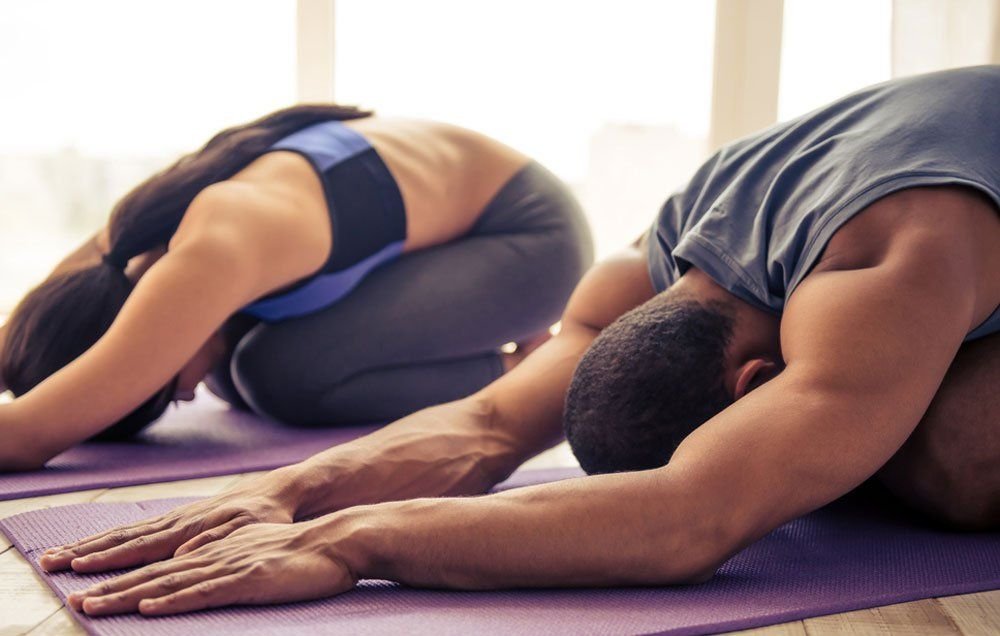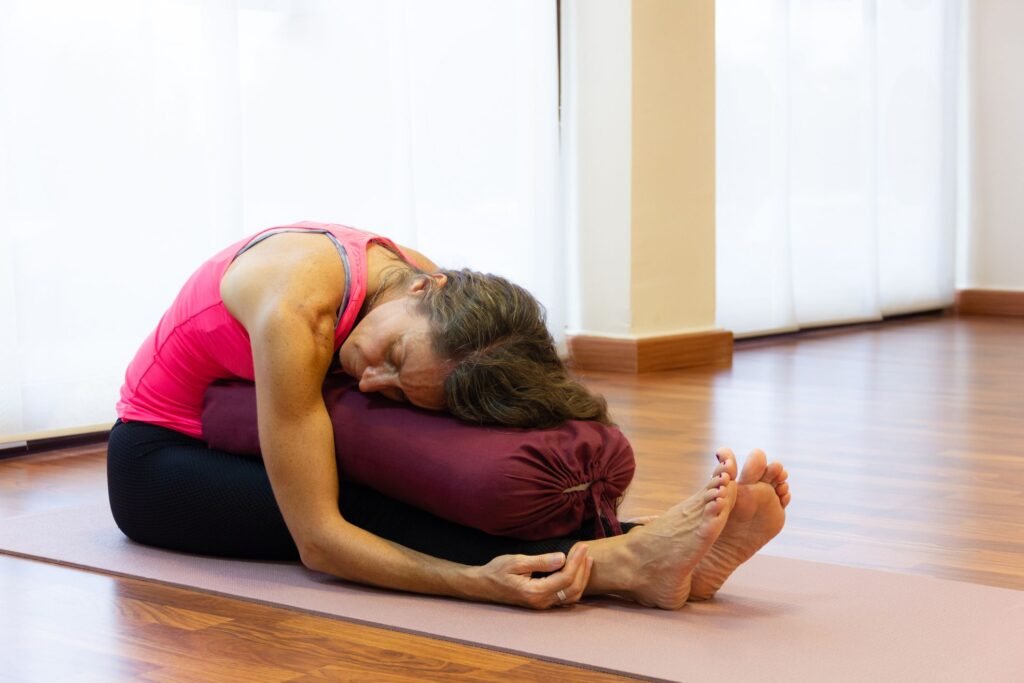Yin Yoga: A Journey to Inner Balance and Flexibility
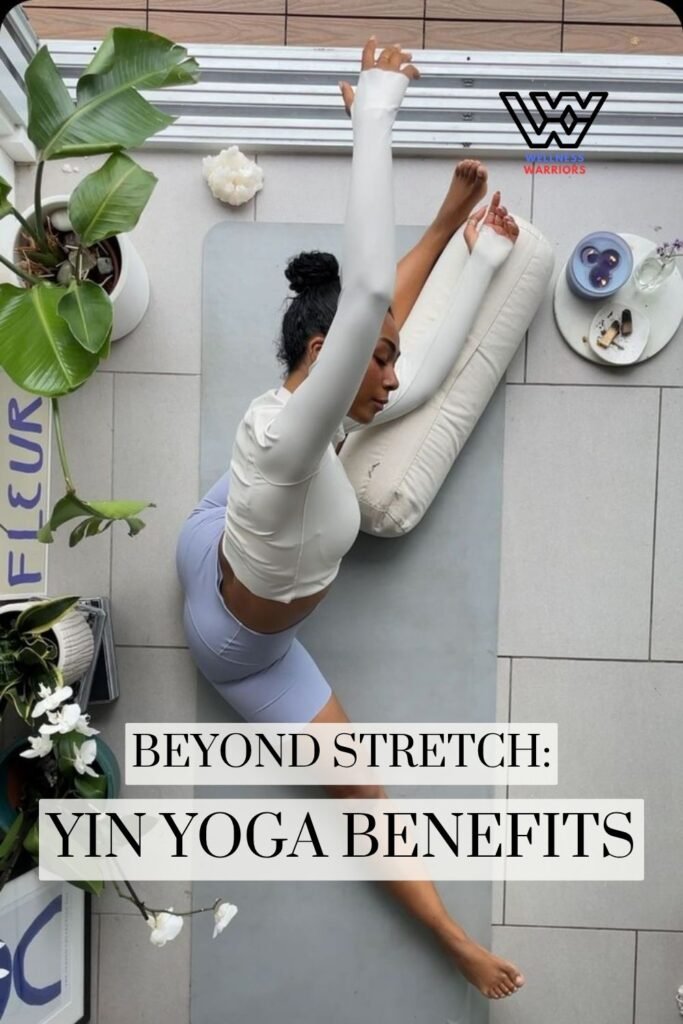
There is so many styles of Yoga , and unless you went to a yin yoga classes, it will be difficult the picture the practice. In Yin Yoga you focus ob passive poses in the fast-paced world of modern fitness, where high-intensity workouts and dynamic yoga styles often take center stage, Yin Yoga emerges as a gentle yet powerful practice that offers a unique path to physical and mental well-being. This ancient-inspired, modern-day practice has gained popularity for its ability to deeply nourish the body, calm the mind, and restore balance to our often hectic lives. In this comprehensive guide, we’ll explore the essence of Yin Yoga, its origins, benefits, and how you can incorporate this transformative practice into your wellness routine.
What is Yin Yoga?
Yin Yoga is a slow-paced style of yoga that emphasizes long-held, passive postures. Unlike more dynamic yoga styles that focus on muscle engagement and repetitive movements, Yin Yoga targets the deep connective tissues of the body, such as fascia, ligaments, and joint . This unique approach allows practitioners to work on areas of the body that are often overlooked in more active practices, promoting flexibility, mobility, and a deep sense of relaxation.
The practice of Yin Yoga typically involves holding poses for extended periods, ranging from two to five minutes or even longer. This extended time in each posture allows for a deeper stretch and stimulation of the connective tissues, promoting flexibility and enhancing the body’s natural healing processes.
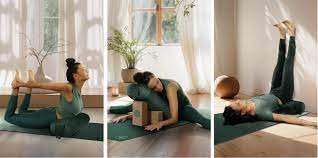
The Origins and Philosophy of Yin Yoga
While Yin Yoga is a relatively modern practice, its roots can be traced back to ancient Taoist principles and Traditional Chinese Medicine (TCM). The practice was developed in the late 20th century, primarily through the efforts of martial arts expert and Taoist yoga teacher Paulie Zink. Zink introduced a synthesis of Hatha yoga with Taoist yoga, which he later called “Yin and Yang yoga.”
The philosophy of Yin Yoga is deeply rooted in the Taoist concept of yin and yang, which represents the balance of opposite yet complementary forces in nature. In the context of yoga, yin represents the passive, static postures, while yang refers to the more dynamic and active styles. This balance is essential in Yin Yoga, as it seeks to complement the more active yang practices with a slower, more meditative approach.
The practice was further developed and popularized by Paul Grilley and Sarah Powers, who integrated elements of anatomy, Daoism, and Traditional Chinese Medicine into the practice. Their contributions have helped shape Yin Yoga into the comprehensive and holistic practice we know today.
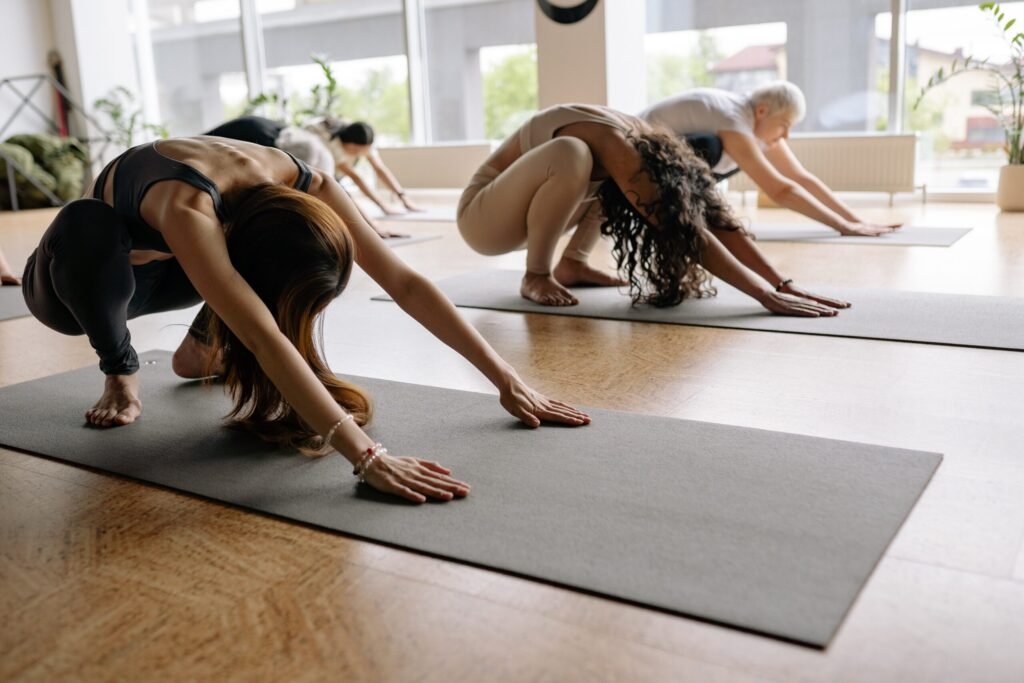
The Physical and Mental Benefits of Yin Yoga
Yin Yoga offers a wide range of benefits for both body and mind, making it a valuable addition to any wellness routine. Let’s explore some of the key advantages of this practice:
Physical Benefits
1. Improved Flexibility and Range of Motion: Yin Yoga is particularly effective in enhancing flexibility by targeting the deep connective tissues. The long-held poses allow for a gentle and sustained stretch, which can lead to increased flexibility over time.
2. Enhanced Joint Mobility: By focusing on the fascia and ligaments, Yin Yoga helps to improve joint mobility. This can be especially beneficial for individuals looking to maintain or regain mobility as they age.
3. Improved Circulation and Energy Flow: The practice of Yin Yoga can enhance circulation and promote the flow of energy throughout the body. This is achieved through the gentle stretching and compression of tissues, which can help to unblock stagnant energy and improve overall vitality.
4. Pain and Tension Relief: Yin Yoga can be an effective way to alleviate pain and tension in the body. The long-held poses allow for a deep release of physical tension, which can be particularly beneficial for those suffering from chronic pain or stress-related tension.
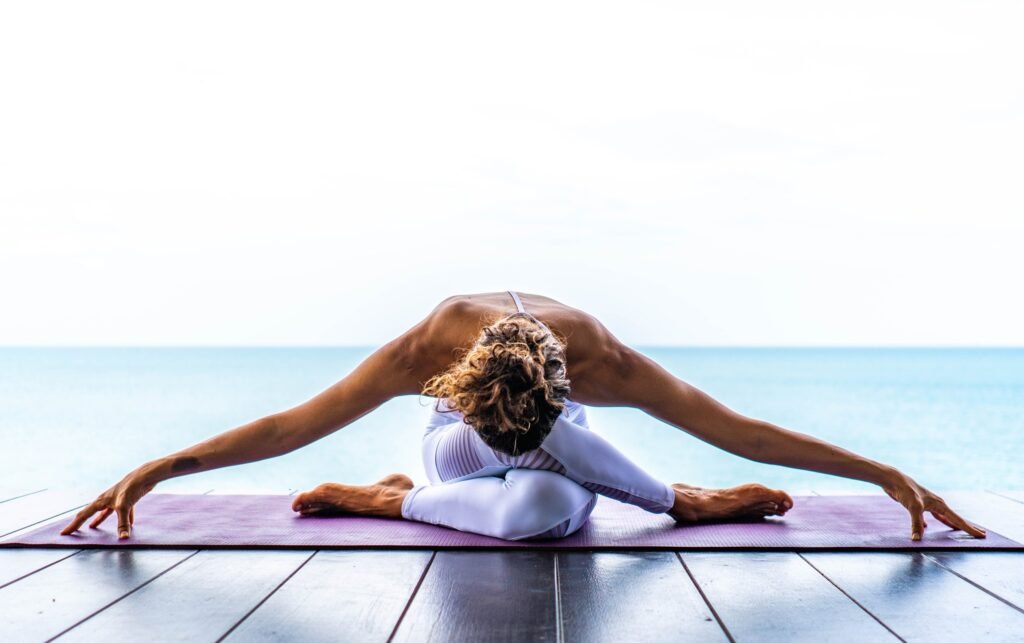
Mental and Emotional Benefits
1. Stress Reduction and Relaxation: One of the most significant mental benefits of Yin Yoga is its ability to reduce stress and promote relaxation. The slow pace and meditative nature of the practice encourage mindfulness and help to calm the mind, making it an excellent tool for managing stress and anxiety.
2. Improved Sleep Quality: Regular practice of Yin Yoga can lead to better sleep. The relaxation and stress-relief aspects of the practice help to prepare the body and mind for restful sleep, making it a beneficial practice for those struggling with insomnia or poor sleep quality.
3. Enhanced Emotional Well-being: Yin Yoga can improve emotional well-being by allowing practitioners to explore their feelings in a non-judgmental space. The practice encourages mindfulness and self-awareness, which can lead to greater emotional balance and resilience.
4. Mental Clarity and Focus: The meditative aspect of Yin Yoga helps to cultivate mental clarity and focus. By encouraging stillness and mindfulness, practitioners can develop a greater sense of mental clarity and concentration, which can be beneficial in both personal and professional settings.
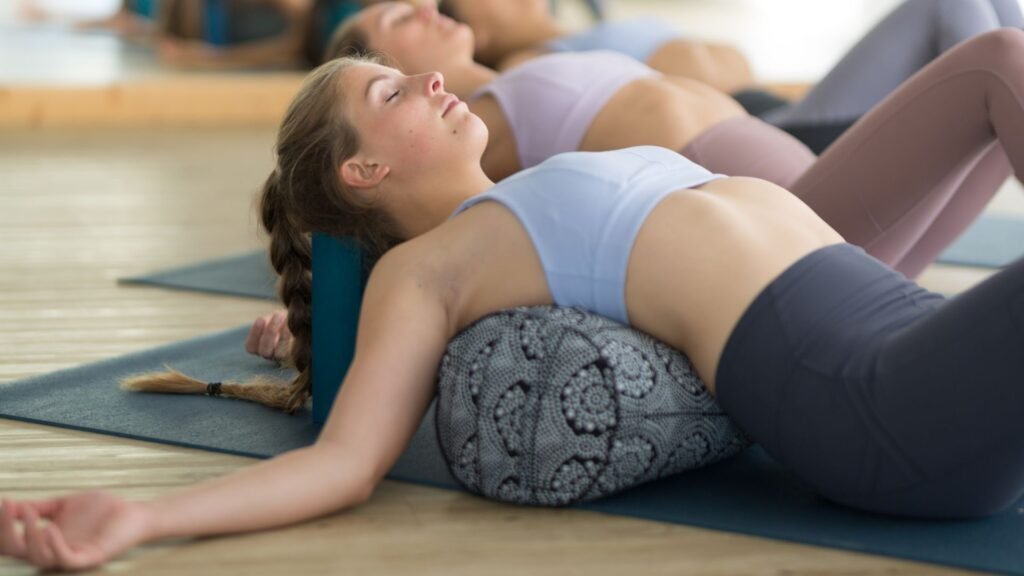
Yin Yoga vs. Other Yoga Styles
To fully appreciate the unique characteristics of Yin Yoga, it’s helpful to compare it with other popular yoga styles:
✔ Vinyasa Yoga
Vinyasa Yoga, also known as “flow” yoga, is characterized by its dynamic and fluid transitions between poses, synchronized with breath. Unlike Yin Yoga’s long-held poses, Vinyasa involves continuous movement, creating a rhythmic flow that is both physically demanding and invigorating. While Vinyasa builds strength and endurance, Yin Yoga focuses on deep stretching and relaxation.
✔ Hatha Yoga
Hatha Yoga is a broad term that encompasses many physical yoga practices. It focuses on basic postures (asanas), breathing techniques (pranayama), and yogic principles at a slower pace than Vinyasa, making it accessible to beginners. While Hatha offers a balanced practice that emphasizes alignment and breath control, Yin Yoga goes deeper into the connective tissues with its longer-held poses.
✔ Restorative Yoga
Restorative Yoga, like Yin Yoga, is a gentle practice that uses props to support the body in restful poses. However, while both styles involve long holds, Restorative Yoga focuses more on complete relaxation and healing, whereas Yin Yoga aims to apply gentle stress to the connective tissues to improve flexibility and energy flow.
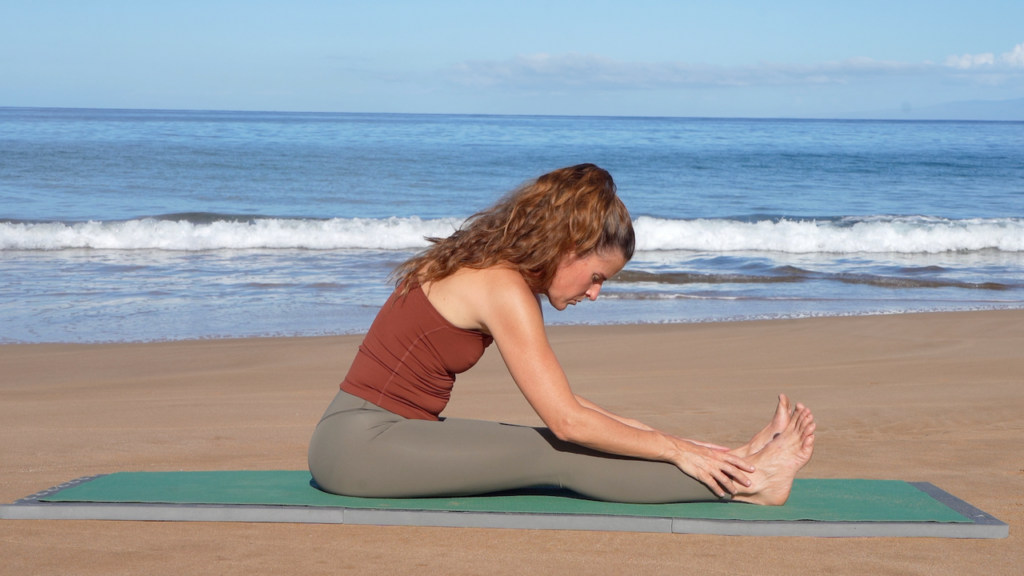
Getting Started with Yin Yoga: Tips for Beginners
If you’re new to Yin Yoga, here are some practical tips to help you get started:
1. Find Your Edge: In Yin Yoga, it’s important to find your “edge” – the point where you feel a deep stretch or sensation, but not pain. The sensation should be described as “comfortably uncomfortable”.
2. Use Props: Props such as blocks, bolsters, straps, and blankets can significantly enhance your Yin Yoga practice. They provide support and allow you to maintain poses comfortably for longer periods.
3. Focus on Breath: Deep, diaphragmatic breathing is crucial in Yin Yoga. It helps you stay present and manage any discomfort during long holds. Try to make your exhales twice as long as your inhales to promote relaxation.
4. Start with Simple Poses: Begin with basic Yin Yoga poses that are accessible and comfortable. Some beginner-friendly poses include Butterfly Pose, Caterpillar Pose, and Reclining Twist.
5. Be Patient and Consistent: Remember that progress in Yin Yoga is gradual. Practice regularly and be patient with your body as it adapts to this new form of stretching and relaxation.
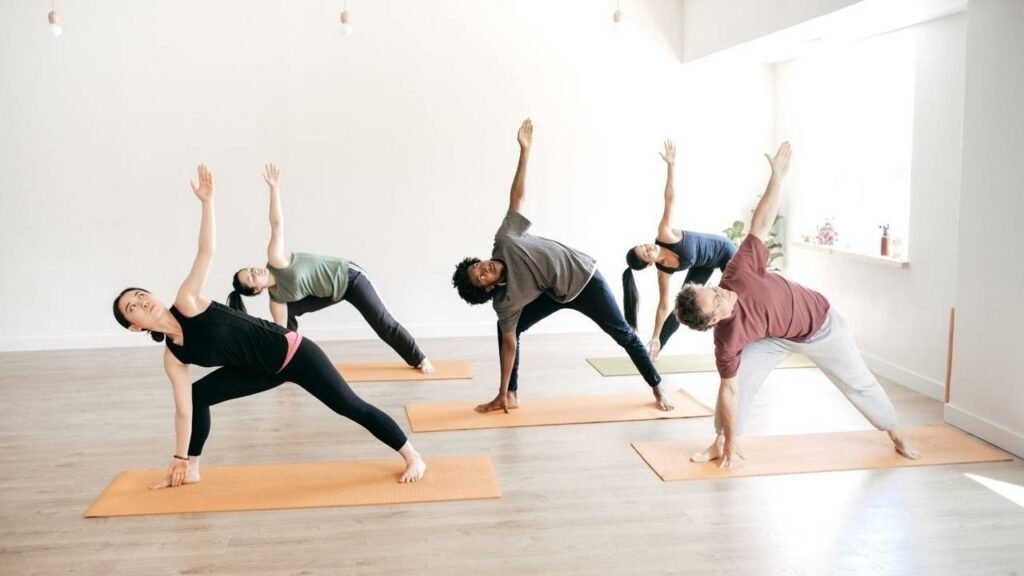
Common Yin Yoga Poses and Sequences
To give you a taste of what a Yin Yoga practice might look like, here are some common poses and a sample sequence:
Common Yin Yoga Poses
1. Butterfly Pose (Baddha Konasana): Sit with the soles of your feet together and knees falling to the sides. Hinge forward at the hips, allowing your spine to round. Hold for 3-5 minutes.
2. Sphinx Pose (Salamba Bhujangasana): Lie on your stomach with forearms on the ground, elbows under shoulders. Lift your torso gently. Hold for 3-5 minutes.
3. Dragonfly Pose (Maksikanagasana): Sit with legs spread wide apart. Hinge forward from the hips, reaching hands out in front. Hold for 3-5 minutes.
Sample Yin Yoga Sequence for Stress Release (75 minutes)
✔ Child Pose: 5 minutes
✔ Butterfly: 5 minutes
✔ Cat Pulling its Tail: 5 minutes each side
✔ Caterpillar: 5 minutes
✔ Bridge: 5 minutes
✔ Dragonfly: 5 minutes
✔ Deer: 5 minutes each side
✔ Sphinx: 5 minutes
✔ Relaxation: 10 minutes
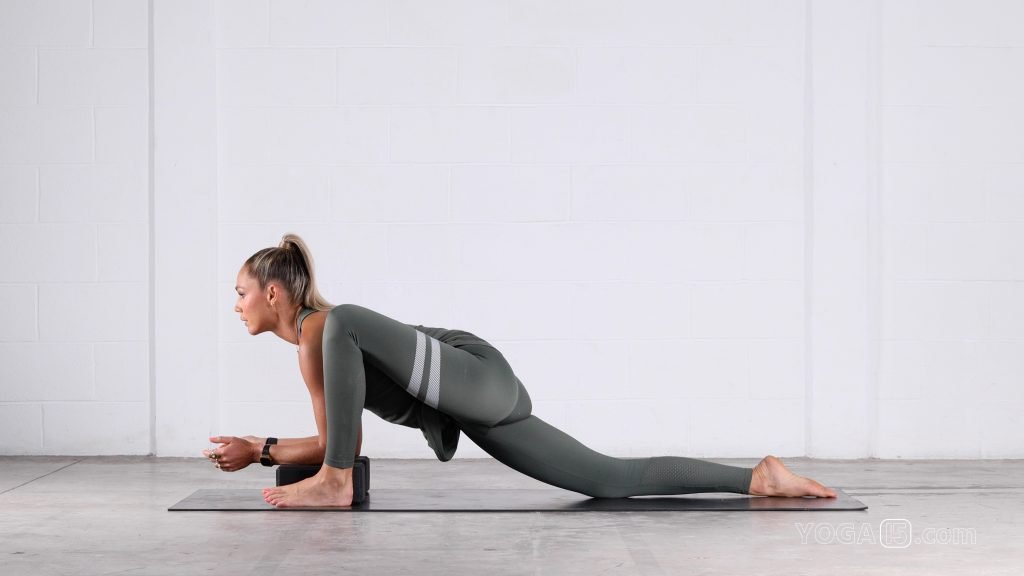
Comprehensive List of Yin Yoga Poses
Beginner-Friendly Poses
1. Butterfly Pose (Baddha Konasana)
Description: A seated pose that opens the hips and stretches the inner thighs.
Instructions:
1. Sit with the soles of your feet pressed together.
2. Hinge forward at your hips, allowing your spine to relax and round.
3. Let gravity pull your upper body down, pressing your forehead toward your feet.
4. Hold for 3-5 minutes. Benefits: Improves flexibility in the hips and inner thighs, promotes relaxation.
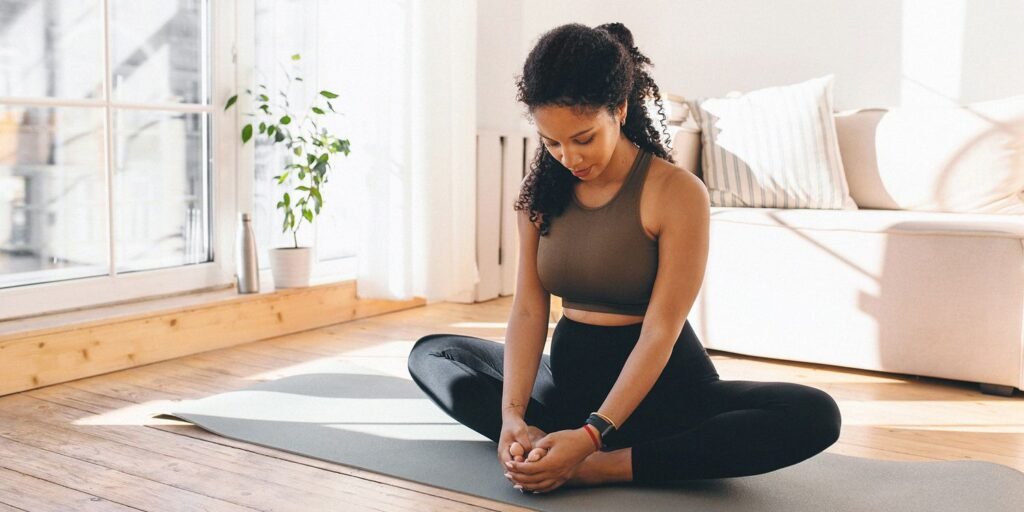
2. Caterpillar Pose (Paschimottanasana)
Description: A seated forward fold that stretches the spine and hamstrings.
Instructions:
1. Sit with your legs extended straight in front of you.
2. Fold forward from your hips, letting your spine round and relax.
3. Keep your legs and feet relaxed.
4. Hold for 3-5 minutes.
Benefits: Stretches the entire back of the body, calms the mind.
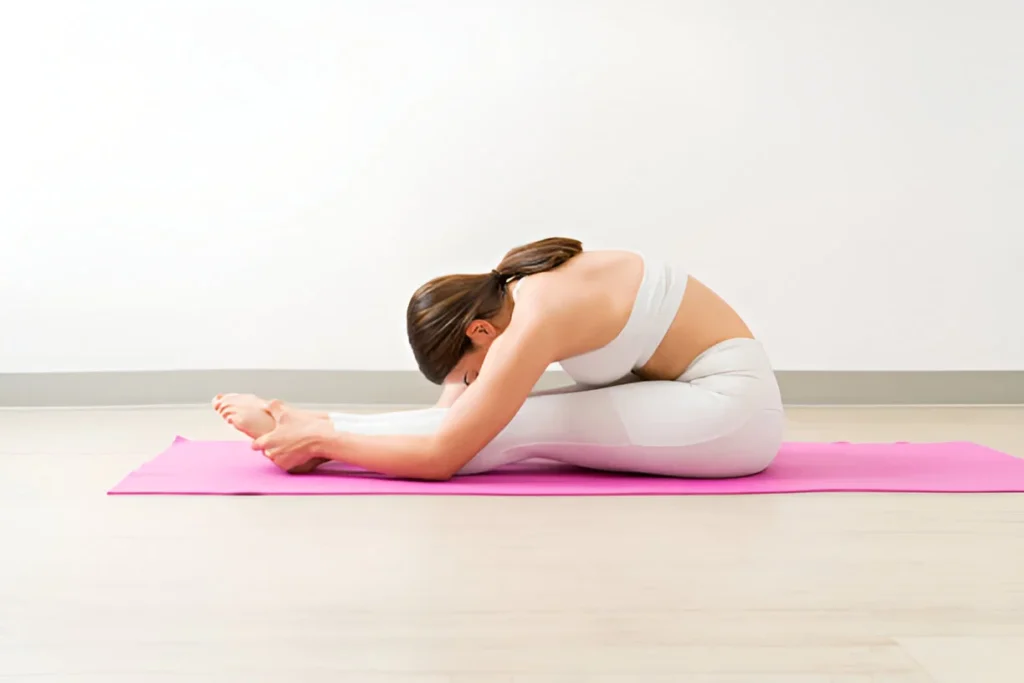
3. Dragonfly Pose
Description: A wide-legged straddle pose that stretches the inner thighs and spine.
Instructions:
1. Sit with your legs spread widely on either side of your torso.
2. Hinge forward from your hips, rounding your spine and relaxing your neck.
3. Reach your hands out on the floor in front of you.
4. Hold for 3-5 minutes.
Benefits: Stretches inner thighs, hamstrings, and spine; improves hip flexibility.
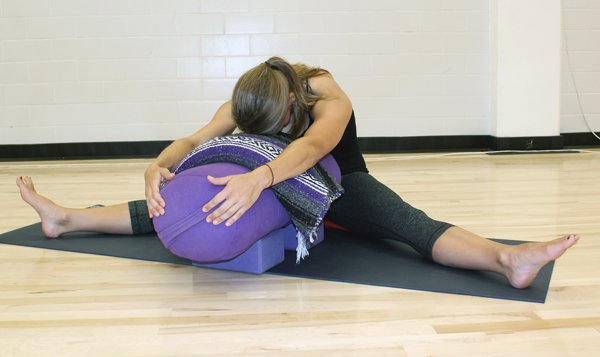
4. Sphinx Pose (Salamba Bhujangasana)
Description: A gentle backbend that counteracts the effects of sitting.
Instructions:
1. Lie on your stomach with your forearms parallel on the ground.
2. Lift your torso off the ground by pulling your shoulders away from your neck.
3. Keep your hips and legs firmly rooted on the floor.
4. Hold for 3-5 minutes.
Benefits: Strengthens the spine, stimulates abdominal organs, opens the chest.
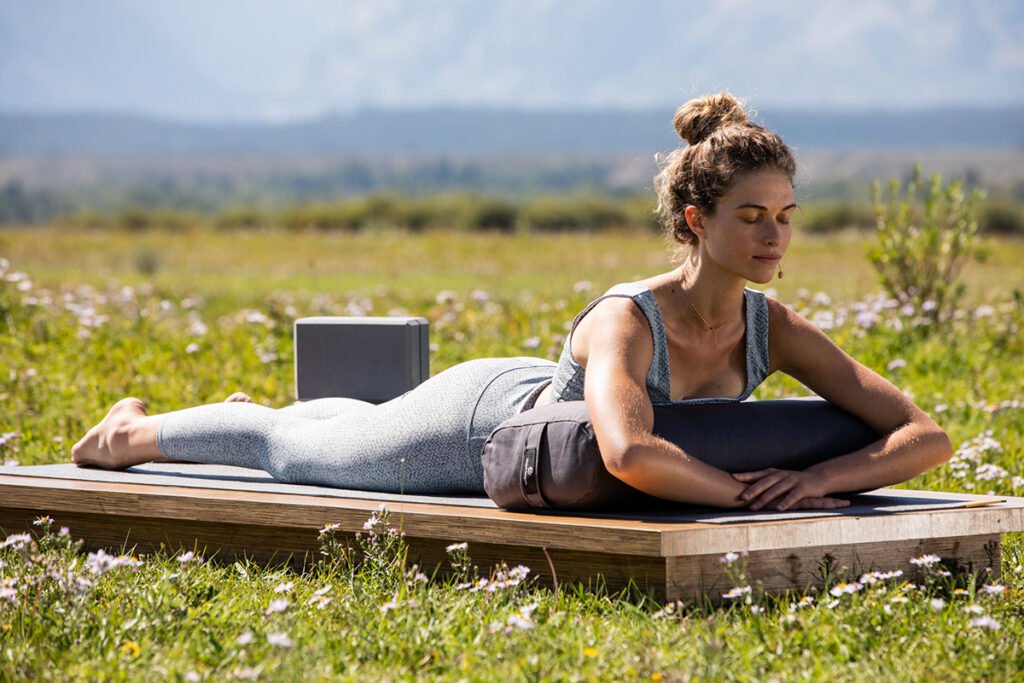
5. Child’s Pose (Balasana)
Description: A resting pose that gently stretches the back and hips.
Instructions:
1. Kneel on the floor with your big toes touching and knees wide apart.
2. Sit back on your heels and fold forward, extending your arms in front of you.
3. Rest your forehead on the mat.
4. Hold for 3-5 minutes.
Benefits: Relieves back tension, calms the mind, and promotes relaxation.
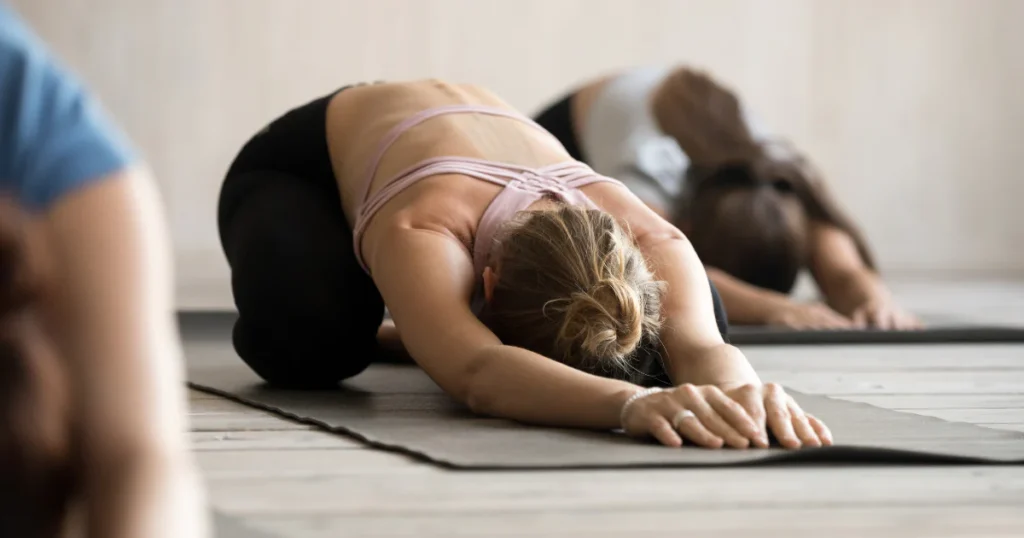
Intermediate Poses
1. Swan Pose (Hamsasana)
Description: Similar to Pigeon Pose, this pose focuses on hip relaxation.
Instructions:
1. Start in a tabletop position.
2. Slide your left knee forward, placing it behind your left wrist.
3. Slide your right leg straight out behind you.
4. Center your weight between your hips and slide your arms forward.
5. Hold for 3-5 minutes, then switch sides.
Benefits: Opens hip flexors, stretches thighs, and improves hip mobility.
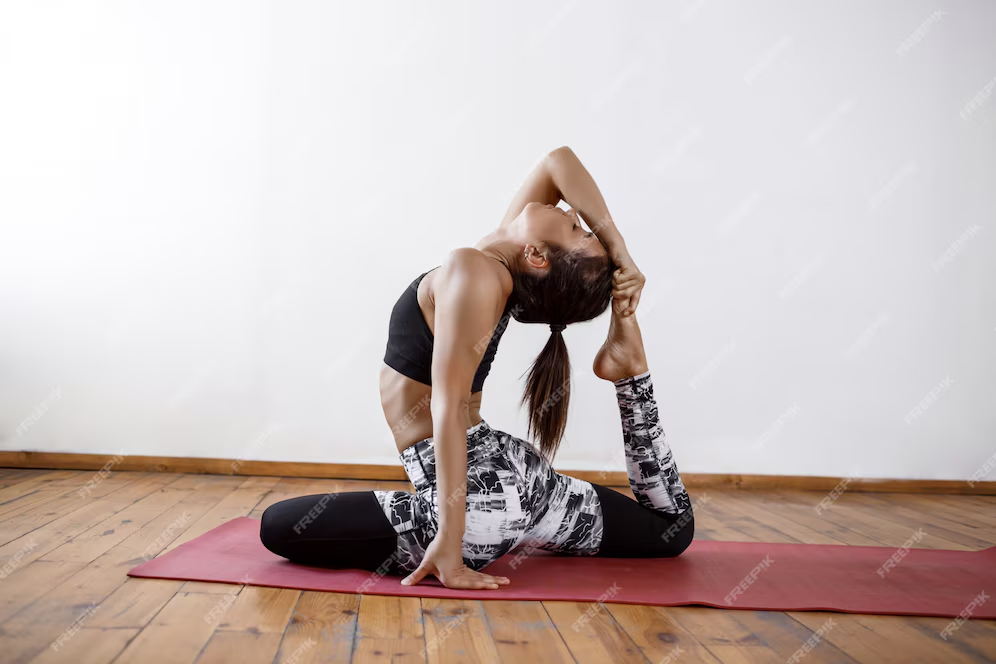
2. Frog Pose (Mandukasana)
Description: A deep hip stretch that requires careful attention to limits.
Instructions:
1. Begin in a tabletop position.
2. Spread your knees wide, keeping your shins parallel to the floor.
3. Point your feet outward and sink into your elbows.
4. Hold for 3-5 minutes.
Benefits: Deeply stretches inner thighs and groin, improves hip flexibility.
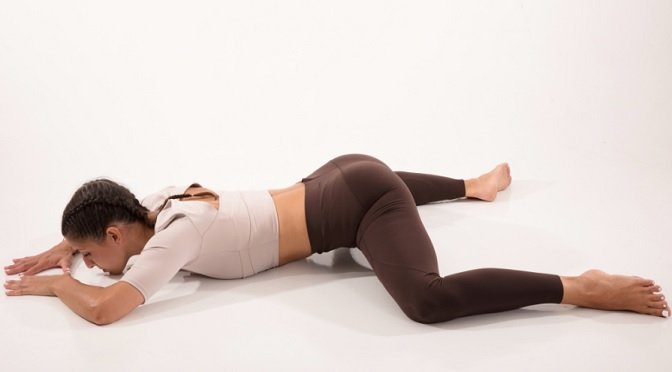
3. Supported Fish Pose (Matsyasana)
Description: Opens the shoulders and chest, counteracting hunching.
Instructions:
1. Sit with your legs extended or knees bent.
2. Place one yoga block under your shoulder blades and another under your head.
3. Recline back onto the blocks, allowing your chest to open.
4. Hold for 3-5 minutes.
Benefits: Opens chest and shoulders, improves posture, aids in respiratory function.
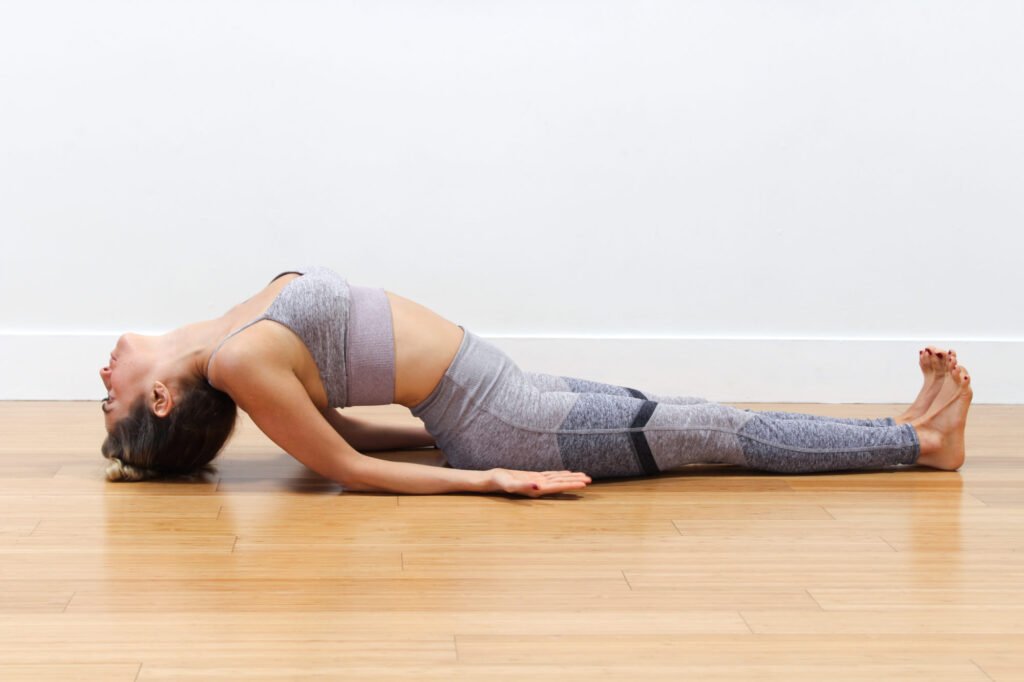
4. Half Saddle Pose
Description: A deep stretch for the quadriceps and hip flexors.
Instructions:
1. Sit on your heels with your knees together.
2. Lean back onto your forearms and lift your right knee, placing the foot on the floor.
3. Lower your upper body to the floor or onto a bolster.
4. Hold for 3-5 minutes, then switch sides.
Benefits: Stretches quadriceps and hip flexors, improves knee flexibility.
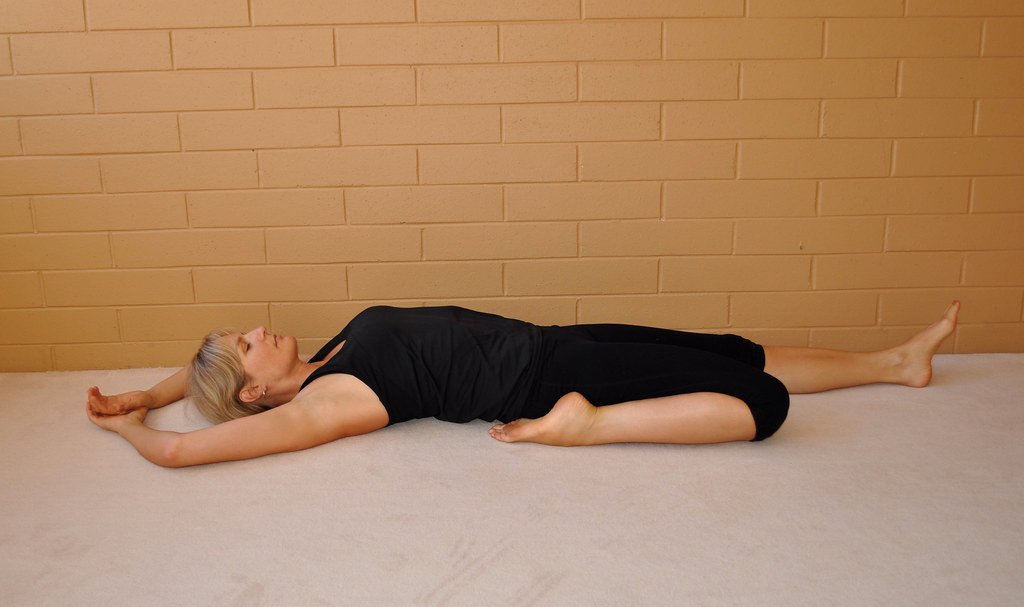
Advanced Poses
1. Full Saddle Pose
Description: An intense stretch for the entire front of the body.
Instructions:
1. Kneel with your feet outside your hips, toes pointed back.
2. Slowly lean back, lowering your upper body to the floor or onto a bolster.
3. Extend your arms overhead.
4. Hold for 3-5 minutes.
Benefits: Deeply stretches quadriceps, hip flexors, and abdominals; improves spinal flexibility.
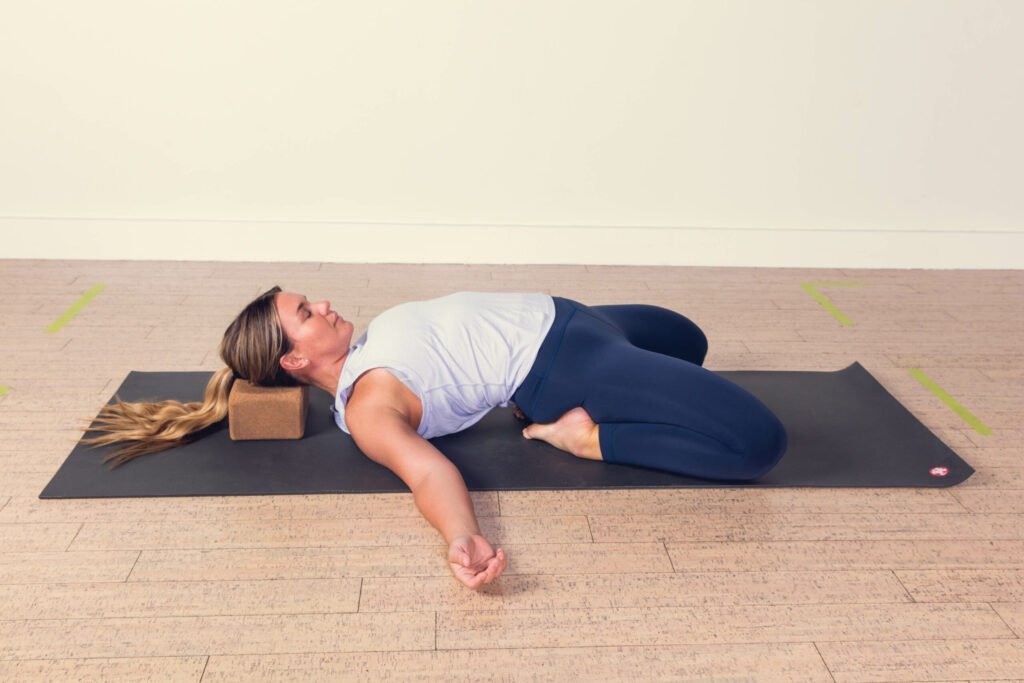
2. Dragon Flying Low
Description: A deep lunge variation that targets hip flexors and hamstrings.
Instructions:
1. Start in a low lunge with your right foot forward.
2. Lower your back knee to the ground and slide it back.
3. Walk your hands inside your right foot and lower onto your forearms.
4. Hold for 3-5 minutes, then switch sides.
Benefits: Intensely stretches hip flexors, improves hip mobility and flexibility.
3. Splits (Hanumanasana)
Description: A challenging pose that requires significant flexibility in the hamstrings and hip flexors.
Instructions:
1. Start in a low lunge with your right foot forward.
2. Gradually slide your right foot forward and left foot back.
3. Lower your hips towards the ground, using props for support if needed.
4. Hold for 3-5 minutes, then switch sides.
Benefits: Deeply stretches hamstrings and hip flexors, improves overall flexibility.
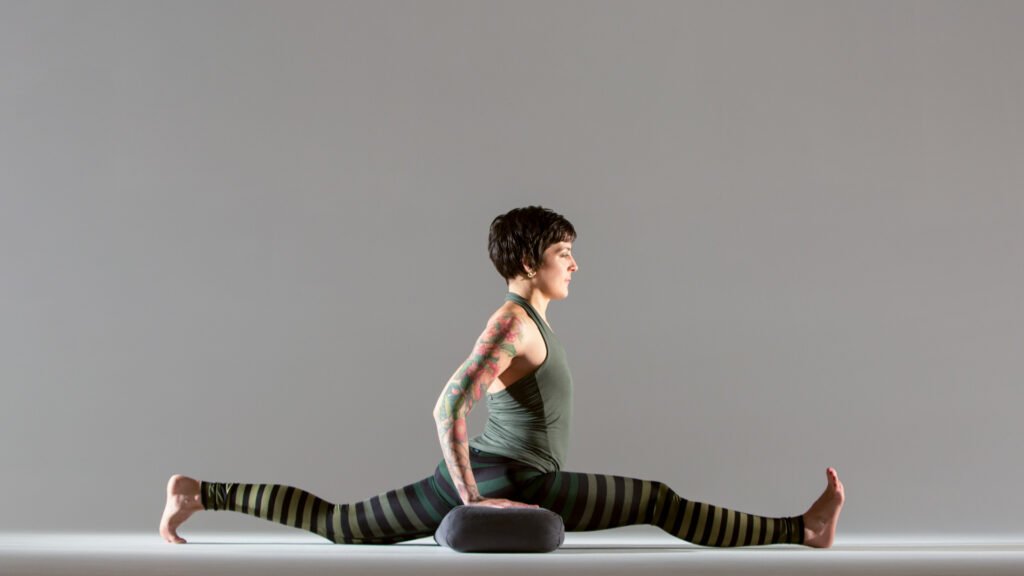
4. Shoelace Pose with Forward Fold
Description: A deep hip and outer thigh stretch combined with a forward fold.
Instructions:
1. Sit with your right knee bent and foot close to your left hip.
2. Cross your left leg over the right, stacking the knees.
3. Fold forward from the hips.
4. Hold for 3-5 minutes, then switch sides.
Benefits: Stretches hips, glutes, and outer thighs; promotes relaxation and introspection.
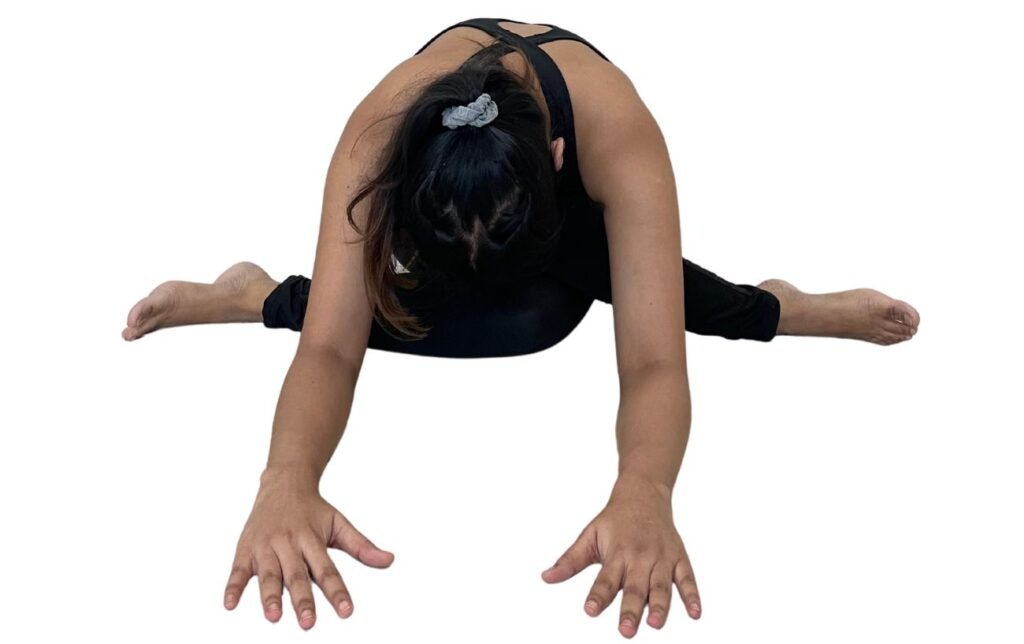
This comprehensive list of Yin Yoga poses offers options for practitioners at various levels, from beginners to advanced yogis. Each pose is designed to be held for an extended period, typically 3-5 minutes, to allow for deep stretching of the connective tissues. Remember to always listen to your body and use props when needed to support your practice. Regular practice of these Yin Yoga poses can lead to improved flexibility, reduced stress, enhanced joint mobility, and a greater sense of overall well-being.
Conclusion: Embracing the Yin
In our yang-dominated world, where constant activity and high-intensity workouts are often glorified, Yin Yoga offers a much-needed balance. By incorporating this gentle yet powerful practice into your routine, you can experience profound benefits for both body and mind. From improved flexibility and joint health to reduced stress and enhanced emotional well-being, Yin Yoga provides a holistic approach to wellness that can complement any fitness regimen.As you embark on your Yin Yoga journey, remember to approach the practice with patience, mindfulness, and a spirit of self-discovery.
Allow yourself to slow down, tune into your body, and embrace the transformative power of stillness. Whether you’re a seasoned yogi or a complete beginner, Yin Yoga has something to offer everyone on the path to inner balance and flexibility.So roll out your mat, grab some props, and prepare to experience the gentle yet profound benefits of Yin Yoga. Your body and mind will thank you for this journey into the yin side of wellness.
